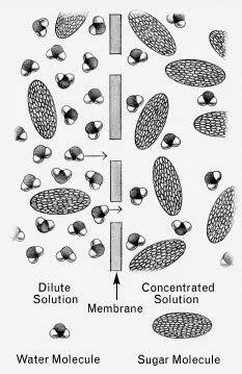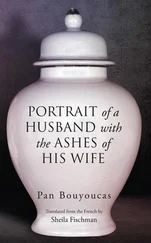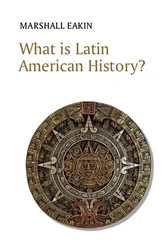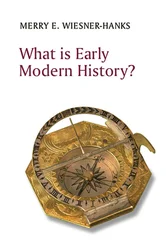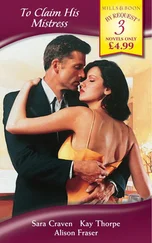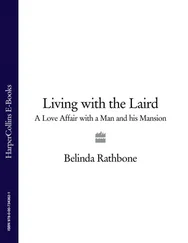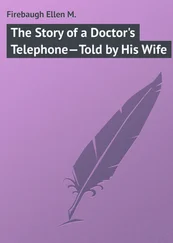Marlene Parrish - What Einstein Told His Cook 2
Здесь есть возможность читать онлайн «Marlene Parrish - What Einstein Told His Cook 2» весь текст электронной книги совершенно бесплатно (целиком полную версию без сокращений). В некоторых случаях можно слушать аудио, скачать через торрент в формате fb2 и присутствует краткое содержание. Год выпуска: 0101, Издательство: W. W. Norton & Company, Жанр: Кулинария, на английском языке. Описание произведения, (предисловие) а так же отзывы посетителей доступны на портале библиотеки ЛибКат.
- Название:What Einstein Told His Cook 2
- Автор:
- Издательство:W. W. Norton & Company
- Жанр:
- Год:0101
- ISBN:нет данных
- Рейтинг книги:4 / 5. Голосов: 1
-
Избранное:Добавить в избранное
- Отзывы:
-
Ваша оценка:
- 80
- 1
- 2
- 3
- 4
- 5
What Einstein Told His Cook 2: краткое содержание, описание и аннотация
Предлагаем к чтению аннотацию, описание, краткое содержание или предисловие (зависит от того, что написал сам автор книги «What Einstein Told His Cook 2»). Если вы не нашли необходимую информацию о книге — напишите в комментариях, мы постараемся отыскать её.
What Einstein Told His Cook 2 — читать онлайн бесплатно полную книгу (весь текст) целиком
Ниже представлен текст книги, разбитый по страницам. Система сохранения места последней прочитанной страницы, позволяет с удобством читать онлайн бесплатно книгу «What Einstein Told His Cook 2», без необходимости каждый раз заново искать на чём Вы остановились. Поставьте закладку, и сможете в любой момент перейти на страницу, на которой закончили чтение.
Интервал:
Закладка:
So, don’t let the name “alcohol” fool you into thinking that a chemical is relatively harmless. Dead is a lot worse than drunk.
THE FOODIE’S FICTIONARY:Taste bud—a sip of beer
ALL HOPPED UP
The label on my beer bottle says that it’s made from “the finest hops.” What’s a hop?
Hops are the dried flowers of the hop plant, known to botanists as Humulus lupulus . It’s a tall, climbing vine of the hemp family, and its flowers impart that mellow bitterness to beers and ales, balancing the sweetness of the malt. They also contribute a grassy flavor note and a pleasant aroma, depending on when in the brewing process they are added to the wort—the fermenting grain mixture.
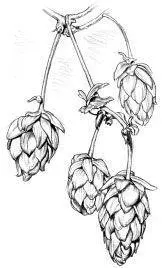
Flower buds of the hop plant ( Humulus lupulus ). Hops are an essential ingredient in beer.
In Belgium, the early spring shoots of the hop plant are a delicacy when cooked and served like asparagus.
There are some interesting sidelights to the story of the hop. For one thing, there are boy hops and girl hops. It’s the mature female flowers, because of their unique resins, that have been used for about a thousand years to flavor brews and tonics. The female plants, incidentally, do very well with no males around; their flowers simply develop no seeds and will not reproduce. Most brewers prefer their hops without seeds, so the males aren’t usually cultivated. (No aspersions intended on the males of other species.)
Practically every quality from sedative to diuretic to aphrodisiac has at one time or another been ascribed to the female hop, and it has historically been added to elixirs and concoctions intended for virtually every purpose. The bitter flavor of hops probably has a lot to do with the traditional belief that good medicine must taste bad.
Do the long-reputed sedative properties of hops have anything to do with the sleepiness that overtakes one after drinking beer? No one really knows. A gallon of beer is made with one or two ounces of hops, but it may contain four or five times as much alcohol, a well-known sedative. We’ll never know the soporific role of the hops until someone carries out the appropriate experiments with alcoholic and nonalcoholic beers containing the same amount of hops. (Looking for a school science project?)
Hops are an essential ingredient in beer, and not only for their aroma and bitterness. They clarify the beer by precipitating the proteins in the wort, and they have antibiotic properties that help preserve the beer. Among the more than 150 chemical compounds that have been identified in their essential oil are chemicals ( terpenes ) called isohumulones, which are light-sensitive. When struck by either visible or ultraviolet light, they break down into very active free radicals (see chapter 4) that react with sulfur in the beer’s proteins to produce smelly compounds called skunky thiols, which the human senses of taste and smell are able to detect at levels of a few parts per trillion. They are chemically similar to the thiol compound in the glands of skunks that earns them their unsociable reputation.
Beer that has been exposed to light for as little as 20 minutes reputedly can develop a “skunky” taste. That’s why beer is packaged either in cans or in light-proof brown bottles. To be safe, then, I recommend that you not leave your beer in the glass while “nursing” it. Drink it as fast as you can.
THE FOODIE’S FICTIONARY:Hops—neither skips nor jumps
Beer Batter Bread
So you think beer is just for drinking? Think again. This beer bread makes excellent toast and wonderful toasted cheese sandwiches. The flavor varies, depending on the beer you use. I tested this recipe with Pittsburgh’s hearty local brew, Penn Pilsner Dark. The bread tastes best the day it is made.
3 cups self-rising flour
3 tablespoons sugar
1 can or bottle (12 ounces) of beer, preferably not light
1.Place an oven rack in the lower third of the oven. Preheat the oven to 350°F. Spray a 9-by-5-by-3-inch loaf pan with nonstick cooking spray.
2.In a large bowl, mix the flour and sugar thoroughly. Gradually add the beer while stirring with a wooden spoon until no patches of dry flour are visible. (Do not overbeat or the bread will toughen.) The batter will be sticky. Transfer it to the loaf pan and spread it into the corners.
3.Bake for 50 to 60 minutes, or until a skewer or cake tester plunged deep into the middle of the bread comes out clean. The top of the loaf will have a cobbled appearance.
4.Turn the bread out of the pan onto a wire rack and let it cool for at least an hour. Use a sharp, serrated knife to slice. The crust will be crunchy and the interior soft and moist.
MAKES 1 LOAF
THE FOODIE’S FICTIONARY:Sourdough—gambling losses
SUL-FIGHTS?
Why do so many wine labels say “Contains sulfites”? My husband has been told he’s allergic to them, but when we asked at the liquor store we were told that all wine naturally contains sulfites. Then why the warning? They don’t label coffee “Contains caffeine.”
Sulf ites —not to be confused with sulf ates —are a family of chemical salts derived from sulfur dioxide (SO 2). They are formed during the fermentation of wine from sulfur compounds naturally present in the grapes, so a certain small amount is indeed natural and unavoidable.
In addition, sulfites (or sulfur dioxide gas from burning sulfur) have been added to wines for thousands of years to protect them against oxidation and discoloration. Moreover, sulfites can kill harmful bacteria and wild yeast cells in the grape pressings so that the “tame” fermenting organisms can get a biologically clean start. Without the preservative effect of added sulfites, wines would not be drinkable after one or two years, which may be little problem for a wine that is best drunk young, such as a Beaujolais, but would be a tragedy for a slow-aging Bordeaux.
About one person in a hundred is sensitive to sulfites, which can even bring on an asthma attack in asthmatics. Sensitive individuals should avoid foods that contain any of the following: sulfur dioxide, potassium bisulfite, potassium metabisulfite, sodium bisulfite, sodium metabisulfite, and sodium sulfite. Note that, except for sulfur dioxide itself, the tip-off is the suffix -ite in the chemical name.
As with all ingested substances, it’s not a simple matter of good and bad. Any chemical is inherently neither “safe” nor “dangerous.” It’s all a matter of amount. The legal limit of sulfites in wine in the United States is 350 parts per million (ppm), although most wines with added sulfites contain only 25 to 150 ppm. According to federal law, if a wine contains 10 ppm or more of sulfites, the label must state that it “contains sulfites.”
With your wine storekeeper’s assistance, look for an FDA-approved “No sulfites added” notice on the labels of some bottles. Your husband can then try them and see if the small amount of natural sulfite is enough to give him a reaction.
And by the way, anyone who says that something “smells like sulfur” probably never took a chemistry course. The solid element sulfur, known biblically as brimstone, is perfectly odorless, but many of its compounds are evil-smelling. Sulfur dioxide is the smell of burning sulfur.
VEDDY, VEDDY SHERRY
Читать дальшеИнтервал:
Закладка:
Похожие книги на «What Einstein Told His Cook 2»
Представляем Вашему вниманию похожие книги на «What Einstein Told His Cook 2» списком для выбора. Мы отобрали схожую по названию и смыслу литературу в надежде предоставить читателям больше вариантов отыскать новые, интересные, ещё непрочитанные произведения.
Обсуждение, отзывы о книге «What Einstein Told His Cook 2» и просто собственные мнения читателей. Оставьте ваши комментарии, напишите, что Вы думаете о произведении, его смысле или главных героях. Укажите что конкретно понравилось, а что нет, и почему Вы так считаете.
